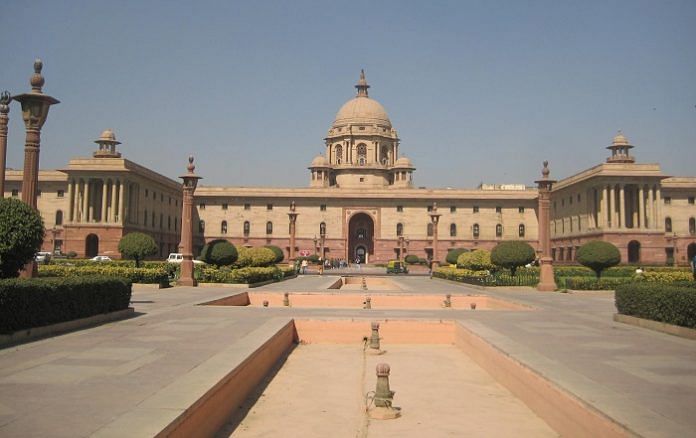The government has set a 2,500 crore target overall but individual goals have been revised following representations by ministries.
The Centre’s ambitious target to ensure 2,500 crore digital payment transactions within the government in this financial year has left several ministries in a tight spot, with some expressing their inability to meet the stiff targets.
The petroleum ministry has raised concerns about the high target, the culture ministry is very circumspect about moving ticketing of monuments to digital platforms and the human resource development ministry has had to ask all educational institutions to move their canteens to digital payment mode despite reservations on the issue. The department of rural development has raised concerns on logistical issues such as mapping of self-help groups’ accounts with bank accounts.
These concerns were conveyed by the ministries in a meeting of the Committee of Secretaries, chaired by the Cabinet Secretary on May 19, ThePrint has learnt.
The 2,500 crore target for digital payments through the Unified Payment Interface (UPI), Unstructured Supplementary Service Data (USSD), Aadhaar Pay, Immediate Payment Service (IMPS) and debit cards is a follow-up of the demonetisation decision announced by Prime Minister Narendra Modi in November 2016.
The target itself was announced in the 2017-18 budget by the finance minister and a dedicated DIGIDHAN mission was set up in the Ministry of Electronics and Information Technology (MEITY) for the purpose. Seventeen central ministries were assigned ‘Digital Payment Transactions Targets’ by the nodal coordinator for the move by MEITY.
Following the meeting, MEITY Secretary Aruna Sundararajan last month wrote to all ministries with revised targets for digital transactions for them. It was noted at the meeting that while RBI data indicated that 329 crore digital transactions were conducted in 2016-17, much more needed to be done to take it to 2,500 crore.
According to the revised numbers, the Ministry of Road Transport & Highways, Ministry of Communications and Ministry of Railways have the highest targets at 584 crore, 563 crore and 282 crore transactions respectively.
At the May 19 meeting, the Ministry of Petroleum and Natural Gas had said that its target of 229 crore is too high and that it could aim to touch just about 150 crore.
While the target set for the HRD ministry was 220 crore, the ministry strongly objected to this pointing out that the goal was being set arbitrarily and was not based on ground realities. It now stands revised at about 117 crore. The school education department pointed out that the government schooling system right up to the eighth standard cannot even have student fees paid in digital mode as fee is exempted for ages 6-14 under the Right to Education Act.
At the May 19 meeting, the department said that it had already shifted all payments to digital mode and there was little scope now for any further growth in digital transactions. It had suggested that an advisory may be sent to private schools to encourage them to move to digital payments instead.
The higher education department raised similar objections, but was asked to aggressively push for making all institution canteens completely cashless, a move that could generate about 68 crore transactions. However, the ministry is not particularly enthused by the idea as most of these transactions are in small amounts, mostly under Rs 100. The ministry, however, last month asked all institutes to ensure that student canteens move to cashless mode.
There is a similar worry around ticketing of monuments managed by the Archaeological Survey of India. Tickets to most monuments, typically, are well under Rs 50 and switching only to digital mode may not be feasible or welcome for most tourists.
There is also a concern over insisting on the use only of government payment platforms such as BHIM and RUPAY and that it may be read by many as coercion.
The ministries of power and railways were more optimistic about the plan with the former reporting that digital payments of 20 crore functioning power meters has doubled to 40 per cent in the last year. The railway ministry has reported a 12 per cent growth in digital payments in 2016-17 at about 60 crore and expects this to swell to 100 crore in this financial year.
The Committee of Secretaries had also recommended that each ministry closely monitor the progress against their targets, facilitate digital transactions and if necessary cross-subsidise digital transactions with cash transactions, identify cash-only government services and switch them to digital mode.
Ministries are to also devise a media strategy and launch campaigns to popularise digital payments, promote the Bharat Bill payment platform and BHIM system. It also called for increasing targets for the ministries of urban development and home affairs and ensure that all payments made to farmers in procurement systems switch to digital mode.



